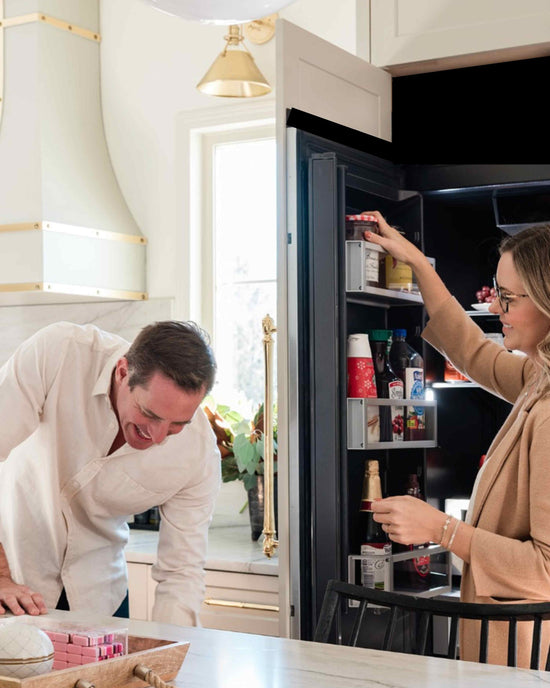
With over 10 years of experience painting over 20,000 pieces, we've got our painting process down! What started out as a hobby, we've turned into a full-time business and have adopted the highest quality and most professional methods to transform a piece! We get questions asking what our process looks like, so today I thought I would take you along! Here's a step-by-step guide from start to finish of how we paint pieces here at our MegMade production facility:
Step 1: disassemblE


The first step is to take off all hardware, hinges, and screws to start with a blank canvas! We keep all of the extras in a labeled ziplock to make sure it all stays together and is ready to put back on at the end!
Step 2: Strip the piece


We completely strip the piece down to get rid of any pre-existing finishes that the piece came into our production warehouse with! This allows us to get down to the woodgrain finish in order to make sure the NEW paint and finishes adhere directly to the original wood.
Step 3: Sand


We then sand down the piece to get any of the excess existing finish off and get a smooth clean slate. This is where we would fix any big scratches, fill any detailing you no longer wanted to see, etc. We work with Bondo! Once we're done with this step, we're officially ready to bring the piece to our paint booth.
Step 4: Tape off


For drawers or two-toned painting, we completely tape off to make sure we're getting a crisp edge! We typically do not paint the inside of drawers as it can sometimes affect the tracks and can keep a "paint" smell since there is less ventilation inside the drawers.
Step 5: Prime & Scuff


It's officially time to prime! Priming each piece is so important to make sure the color of the paint can really shine through. For pieces that are going a darker color, like in this case our in-house navy, we prime with a black primer. For pieces that are going a lighter color, we prime with white! After we prime, we scuff the entire piece for the paint to optimally adhere.
Step 6: Paint


Our paint is imported from Italy and has the highest durability standards. We mix it and put it in the paint gun and get to work! Depending on the piece, we do anywhere from 3-10 coats to make sure it's looking gorgeous. We scuff in between each coat for adhering purposes. Once it's painted, we usually give about 24-48 hours for it to fully cure before we start the next step.
Step 7: Reesemble


Now that the piece is looking brand new, it's time to put the jewelry back on - the hardware! We typically polish the original hardware but have a few different options when it comes to hardware. We polish, can spray for a newer look from the vintage hardware or can put new hardware on altogether. If we are putting new hardware on, we ask that you let us know in advance so we can fill and drill the holes during the restoration process of the piece.
Step 8: clean & inspect


Once the piece is completely put together, we like to wait for the paint to completely settle and do a full inspection and good clean to the piece to get it ready to go out to its forever home! Because of the nature of vintage wood, this is the stage that we look for any settling issues, drawer closures, etc. Once we've inspected it, it's ready to be scheduled to go out!
Step 9: Admire The Piece In Your Home!


We LOVE seeing our finished pieces in your home! Each family decorates with their own personality and style, so it's awesome to see how you make the piece yours! Tag us @megmade with your finished pieces in your home.
Good things take time! Each of these steps usually take our production team between 1-3 hours plus wait time depending on the detail! We want our pieces to be heirlooms that can be taken with you from house to house and passed down for generations! Want to get started on refinishing a piece with us? Email us at hello@megmade.com!
Like this blog? Check out our other blogs like the ones below:




Leave a comment